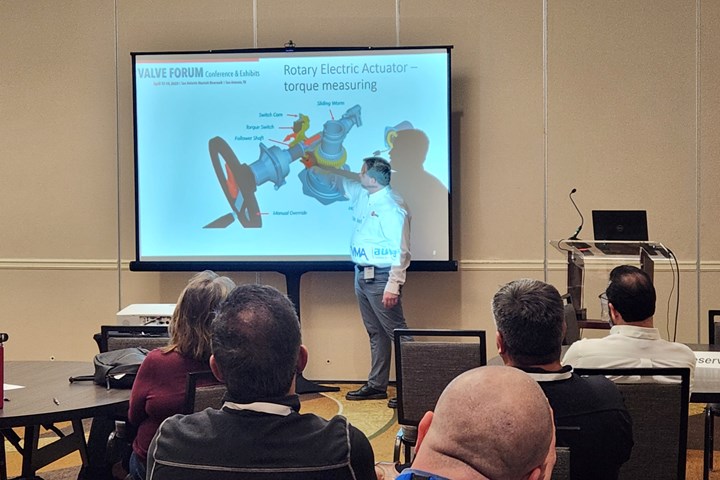VMA Valve Forum Held in San Antonio
On April 17, the VMA Valve Forum kicked off in San Antonio, Texas.
#VMAnews

On April 17, the VMA Valve Forum kicked off in San Antonio, Texas. With more than 120 people in total attendance, up more than 20%, the event opened with a networking reception in a ballroom with nearly 20 exhibitors participating.
The conference began on Tuesday with a general session covering manufacturing industry trends. After that attendees could choose from a variety of offerings in four different tracks: Technical, Valve Fundamentals, Manufacturing and Management & Marketing. Within the tracks sessions included topics including: a case study on a 168-inch diameter butterfly valve installation; nondestructive valve evaluation; additive manufacturing; using social media in your marketing mix; potential implications surrounding PFAS chemicals and becoming a data-driven organization.
Also this year a variety of roundtables were held where attendees had a chance to discuss topics in each of the tracks. Two students and a professor from Texas A&M’s Industrial Distribution program shared information about their coursework, what they are looking for in their careers from employers and more. Industry attendees also asked questions of the students and asked for their feedback on a number of topics.
Attendees had plenty of time for networking and reconnecting with each other, and had the chance to take a tour of the San Antonio River Tunnel Facility.
Sponsors included: EFCO USA, ETI Systems and Setpoint Integrated Solutions.
RELATED CONTENT
-
Solenoid Valves: Direct Acting vs. Pilot-Operated
While presenting in a recent VMA Valve Basics 101 Course in Houston, I found myself in a familiar role: explaining solenoid valves (SOVs) to attendees. (I work with solenoids so much that one VMA member at that conference joked that I needed to be wearing an I Heart Solenoids t-shirt). During the hands-on “petting zoo” portion of the program, which involves smaller groups of attendees, one of the most frequently asked questions I get from people came up: What’s the difference between direct-acting and pilot-operated SOVs, and how do we make a choice?
-
Ball Valve Basics
Welcome to the first in a series of Valve Basics articles, each focused on a major product type and written especially for newcomers to the industries that use and make valves and related products.
-
Stop Check Valves
Stop check valves are vital to several industries to protect boilers and other equipment.










 Unloading large gate valve.jpg;maxWidth=214)